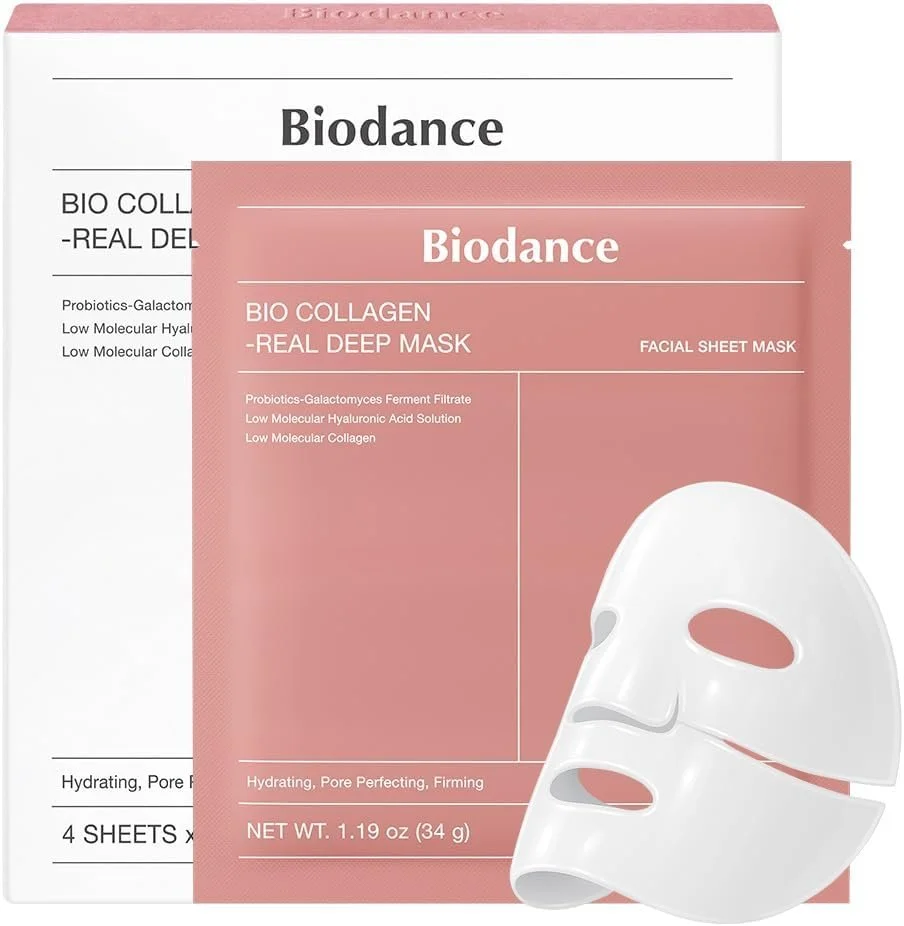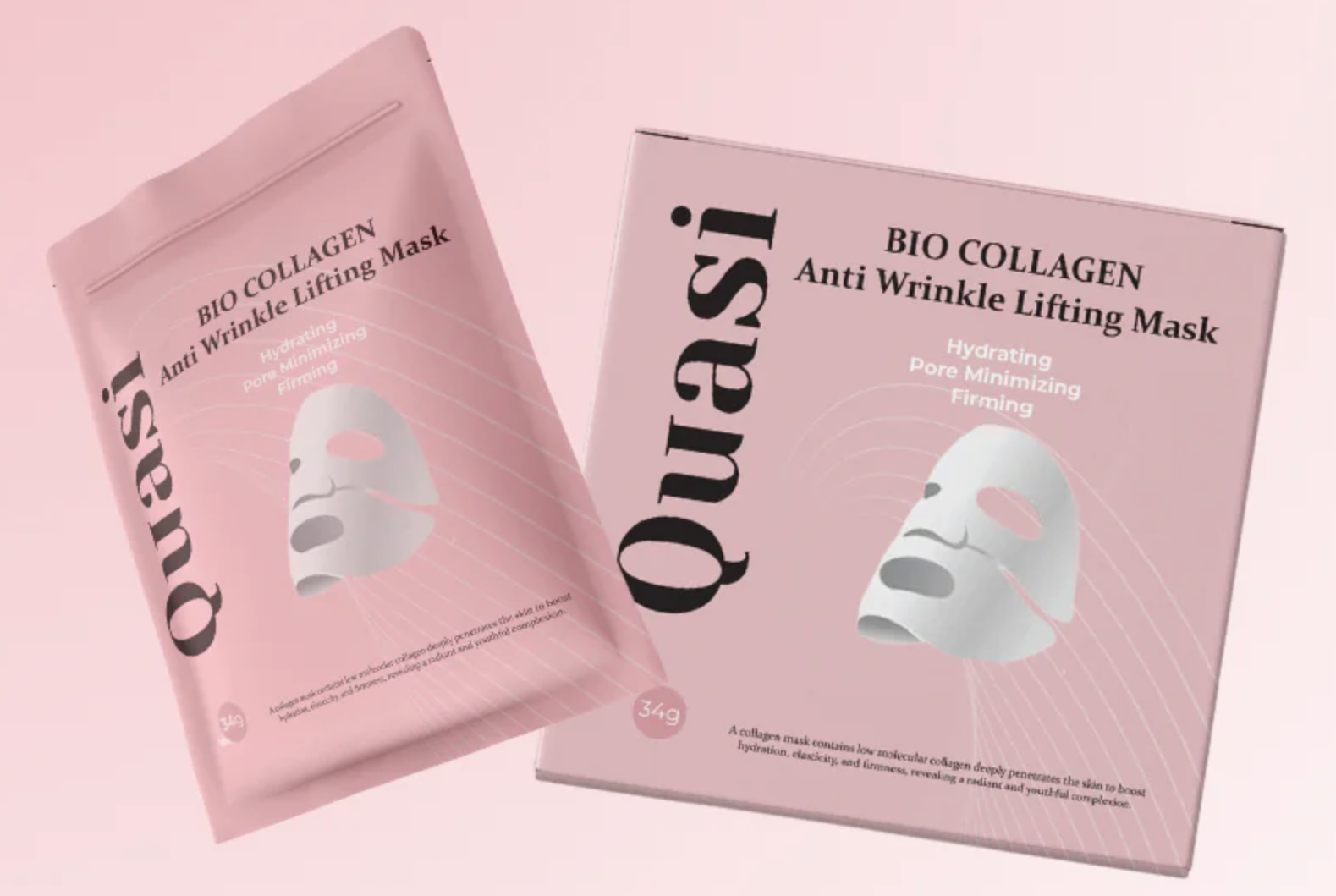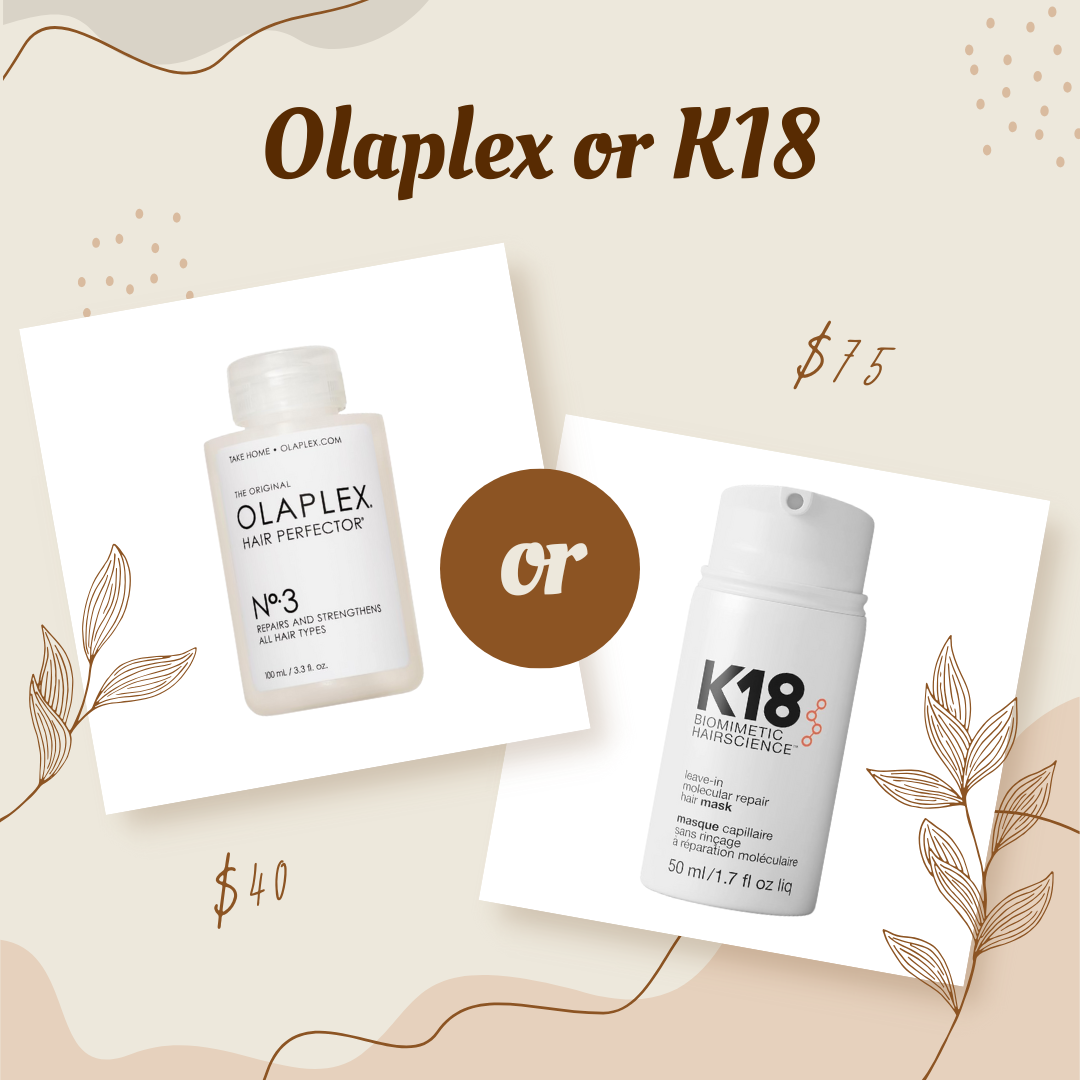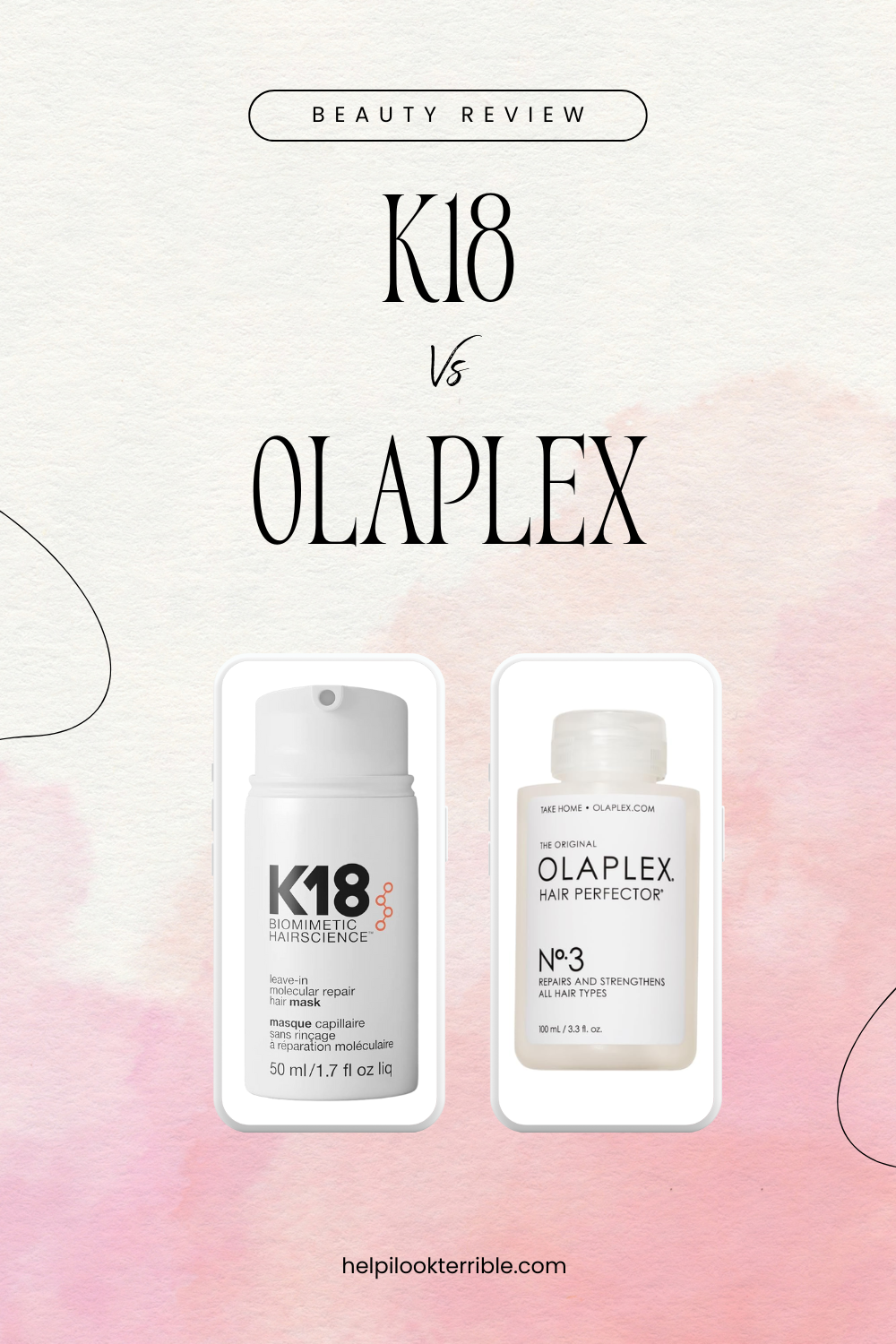Biodance vs Quasi Bio Collagen Face Mask: Which is better?
Biodance and Quasi Bio Collagen Face Mask are overnight collagen face masks that promise to boost hydration, reduce the appearance of fine lines, and make your face look all dewy. But do they both work? And which one is better?
The Biodance Bio Collagen Face Mask and Official Quasi Bio Collagen Face Mask are overnight collagen face masks that promise to boost hydration, reduce the appearance of fine lines, and make your face look all dewy.
But do they both work? And which one is better?
I definitely have my own opinion on this, but today I’m looking at the science behind the face masks to work out which one is actually more effective.
Note: There are some affiliate links in this post. Clicking on them won’t cost you anything extra, it just helps me keep the site running :)
How hydrolysed collagen works
The Biodance Bio Collagen Mask and Quasi Bio Collagen Mask both use hydrolysed collagen, which is collagen that has been broken down into small peptides that are easy to mix into water-based products, like sheet masks.
These peptides primarily act as humectants that form a thin, hydrating film on the skin’s surface, and they’re pretty powerful.
Humectant: They are excellent at binding water to the very top layer of your skin.
Film-Former: They leave a thin, flexible, invisible layer on your skin.
This film, combined with the occlusive environment of the mask itself (the physical barrier that locks everything in), creates a hydration lockdown. This stops water from evaporating out of your skin.
The result? The top layer of your skin swells up with moisture, making it look instantly smoother, plumper, and bouncier. That satisfying firming effect you feel is incredible hydration.
| Feature | Biodance Bio-Collagen Real Deep Mask | Quasi Bio-Collagen Mask | Comparative summary |
|---|---|---|---|
| Key hydration technology | Hydrogel mask designed to solidify and turn transparent as ingredients are absorbed (can be worn up to 8 hours/overnight). | Hydrogel mask with similar long-wear technology, also designed to turn transparent as essence is absorbed. | Identical occlusion: both masks use the same core hydrogel delivery method, which is key to any long-term moisture benefit. |
| Collagen type | Ultra-low molecular weight collagen (as small as 243 Daltons). | Ultra-low molecular weight collagen. | Penetration advantage (claimed): Biodance publicly claims a smaller molecular size (243 Da), suggesting a slight edge in getting peptides into the upper epidermis. |
| Main hydrating agent | Oligo-hyaluronic acid (ultra-low molecular weight). | Oligo-hyaluronic acid (ultra-low molecular weight). | Identical efficacy: both use the most advanced, small-particle HA designed for deeper epidermal absorption. |
| Barrier-building ingredients | Galactomyces ferment filtrate, probiotics, niacinamide. | Galactomyces ferment filtrate, probiotics, niacinamide. | Identical long-term benefit: both formulas contain the same proven, gold-standard ingredients for skin brightening, barrier repair, and elasticity. |
| Specific clinical metrics | Publicly cited: 166% moisture increase after 150 hours. | No publicly cited metrics: marketing focuses on ingredients (collagen, niacinamide, ferments) and the hydrogel's visual transformation. | Key difference: Biodance offers specific, published (though proprietary) numbers, giving consumers a quantifiable reason to believe the mask's effects are long-lasting. |
How effective is hydrolysed collagen?
Hydrolysed collagen is a powerful moisturising agent, but it’s not a long-term solution.
It’s not a restorative product that rebuilds structural collagen deeper in the dermis. That’s because the collagen sits on the skin, rather than penetrating it.
Hydrolysed collagen actually only increases hydration for about two to four hours — the effect fades as the film breaks down.
By comparison, hyaluronic acid and ceramides work within the stratum corneum — the outer layer of the skin — to hold water and strengthen the lipid barrier. Their effects can last six to eight hours or longer, depending on concentration and delivery method.
Debunking claims
The Biodance Bio Collagen Mask specifically markets its formula as being superior in absorption due to the size of its key molecules:
Ultra-Low Molecular Weight Collagen: Biodance claims to use collagen peptides with a very small size (as low as 243 Daltons). The idea is that the smaller the molecule, the better it can penetrate the stratum corneum (the outermost layer of the skin). While topical collagen doesn't reach the deeper dermis to rebuild natural collagen, smaller peptides can theoretically penetrate the upper layers of the epidermis more effectively than larger ones, enhancing surface hydration and plumping.
Oligo-Hyaluronic Acid: Similarly, Biodance uses ultra-low molecular weight hyaluronic acid, which is designed to penetrate deeper into the epidermis compared to high molecular weight hyaluronic acid, providing moisture across multiple surface layers.
There is limited research about Quasi, but those masks also use the advanced, occlusive hydrogel technology that presses the essence against the skin for hours. This prolonged contact time greatly enhances the absorption of all its ingredients, which include similar high-efficacy components like niacinamide and ferments.
Biodance has a specific molecular advantage, but both masks deliver powerful ingredients through the common advantage of prolonged hydrogel application.
Mask adhesion and wear
Both use bio-cellulose or a similar material that is prized for its excellent adhesion and close fit. The mask starts thick and slowly dissolves into the skin over several hours (three or four hours, or overnight).
This unique process is highly effective at delivering intense moisture.
Lasting hydration
Based on their ingredient lists, both masks offer high levels of hydration and are effective at smoothing and calming the skin.
Biodance emphasises its precise low-molecular-weight ingredients, which the brand's own studies claim result in moisture effects that last for over 150 hours.
Quasi relies heavily on the proven benefits of its galactomyces and niacinamide blend for brightening and barrier strength, alongside its collagen.
Which mask is more effective?
Both the Biodance Bio Collagen Mask and the Official Quasi Bio Collagen Mask use high-quality, similar formulations and hydrogel technology.
The Biodance mask delivers excellent surface moisture and smoothing benefits through its collagen content, which provides a temporary plumping effect.
The Quasi mask, like Biodance, uses a blend of collagen, galactomyces ferment filtrate, and niacinamide to support hydration and the skin barrier.
Because both products share core barrier-repairing and hydrating ingredients, both masks are effective for intense surface hydration and barrier support during long wear.
Which one is better value?
Collagen face masks are not long-term fixes for aging skin, but that doesn’t mean they’re not a quality addition to your skincare routine. The hydration and dewy glow they provide is almost unparalleled, even if it is only a short-term solution.
Topical hyaluronic acid is also a short-term solution, but I wouldn’t stop using that.
At the end of the day, Quasi and Biodance are very similar.
The key differences are cost and marketing claims. Biodance has more scientific data to back claims, while Quasi only really has claims.
At the time of writing, Biodance cost $19 for four masks, while Quasi cost $21.99 for eight masks.
Personally, I preferred Quasi because the sheet mask itself was thicker and more durable than the Biodance mask. But that was just my experience.
My recommendation? Pick whichever one is on sale.
Which one is your favourite? Let me know in the comments below!
You Might Also Like…
K18 vs Olaplex Review: Which bond builder is better?
K18 and Olaplex are powerful hair bond builders widely touted as the most effective on the market. Both promise to repair damaged hair, but they work with different active and in very different ways. So which one is better value? Here’s a detailed comparrison.
K18 and Olaplex are powerful hair bond builders widely touted as the most effective on the market. Both promise to repair damaged hair, but they work with different active and in very different ways. So which one is better value?
I’ve put both to the test, you can read the Olaplex review here and the K18 review here, but this is more of a side-by-side analysis so you can work out which one might be better for you.
What do bond builders actually do?
Olaplex No. 3 Hair Perfector is part of the larger Olaplex hair treatment range and works to temporarily repair disulphide bonds in the hair. These are the bonds that break when you bleach, dye, or heat-style your hair to death. Olaplex’s ingredient, Bis-Aminopropyl Diglycol Dimaleate, works on a molecular level to restore strength and structure.
K18 Leave-In Molecular Repair Hair Mask claims to go deeper than surface-level fixes. It uses a bioactive peptide, the K18Peptide, designed to reconnect broken keratin chains—essentially repairing hair from the inside out. It's marketed as a lasting, progressive treatment that apparently reverses damage in just four minutes.
Does K18 fix split ends?
The only thing that repairs split ends is scissors. Repairing a split end is a bit like tearing a blade of grass through the middle and trying to put it back together. It won’t work. However, you can nourish your hair properly to prevent split ends. This is where bond builders come in.
K18 helps strengthen and smooth hair, which can reduce the appearance of split ends—but it won’t glue them back together. For true split-end removal, a trim is still your best bet. That said, K18 can help prevent future splitting by making the hair stronger and less prone to breakage.
Does Olaplex fix split ends?
Similar story. Olaplex No. 3 Hair Perfector doesn’t fix split ends, but it helps improve the overall integrity of the hair. The bond-building action may reduce how often split ends occur, especially with regular use.
Does K18 help hair grow?
K18 doesn’t stimulate hair growth directly. What it does do is strengthen hair so it breaks less, meaning you keep more of the length you already have. If your ends tend to snap off, K18 might help you hold on to inches longer.
Does Olaplex help hair grow?
Same deal. Olaplex hair treatment isn’t a growth serum, but it can support length retention by reducing damage and breakage. Healthier hair equals less trimming and more visible growth over time.
Is K18 a protein treatment?
Not in the traditional sense. While K18 works similarly to protein treatments by reinforcing the hair structure, it doesn’t contain actual protein. Instead, it uses a patented peptide to mimic and repair keratin chains from within. It’s designed to avoid the stiffness that can come from traditional protein overload.
Is Olaplex a protein treatment?
Nope. Olaplex 3 Hair Perfector is not a protein treatment either. It works on broken disulphide bonds—different from keratin or protein bonds—so you can use it even if your hair is sensitive to protein-heavy formulas.
How to use K18 and Olaplex
Olaplex No. 3 Hair Perfector: Apply to damp, towel-dried hair before shampooing and conditioning. Leave it on for 10 minutes or longer, rinse, then follow with your regular wash routine. It’s CG-friendly and safe for all hair types.
K18: Shampoo, do not condition, towel-dry until damp, then apply 1–3 pumps of the mask from roots to ends. Wait four minutes, then style as usual. Do not not rinse. In all honesty, this was problematic for me.
Which one lasts longer?
Olaplex isn’t permanent, but the effects stick around longer than one wash. With consistent use, it builds on itself and really helps improve the health of your hair over time.
K18 markets itself as a long-term fix that fixes your hair from the inside out, particularly with regular use.
Price breakdown
Olaplex No. 3 (100ml): Around $30–$40.
K18 Leave-In Mask (50ml): Roughly $75, with a 5ml trial size around $16.
When I tested them both out, I needed to use more Olaplex to properly detangle my hair and get a brush through it, but not a huge amount. With the comparatively lower cost, that’s justified.
You’re not supposed to use a huge amount of K18, but I found it incredibly difficult to use on hair that was not conditioned. To try and get a brush through it, I needed to use more product. For the price, I didn’t think the amount I had to use was justified.
K18 v Olaplex: A Comparison
| Feature | Olaplex No. 3 | K18 Leave-In Mask |
|---|---|---|
| Best for | Bleached, dyed, heat-damaged hair | Bleached, chemically treated, or heat damaged hair |
| Application | Rinse-out treatment | Leave-in treatment |
| Slippage | High slip, detangles easily | No slippage |
| Key Ingredient | Bis-Aminopropyl Diglycol Dimaleate | K18Peptide (bioactive peptide) |
| How long does it take to work? | 3-10 minutes, rinse out | 4 minutes, leave in |
| Where is it made? | USA | USA |
| Split ends? | Helps prevent, doesn't fix | Helps prevent, doesn't fix |
| Hair growth? | Helps retain length | Helps retain length |
| Protein treatment? | No | Not technically, but similar effect |
| Price | $30–$40 | $75-$120 |
| Bottle Size | 100ml | 50ml-100ml |
My experience
Olaplex No. 3: This one made my hair feel smoother, shinier, and way easier to detangle after the first try. It didn’t magically heal my hair overnight, but after a few weeks of using it every other wash, I noticed less breakage and frizz. My hair held moisture longer and didn’t feel like straw by day four. There was also significantly less hair in the brush.
K18: This did not start off well. The first time I tried it, I followed the instructions exactly—no conditioner, damp hair, four-minute wait. My curls were flat, dry, and felt like hay. Detangling was awful. Three days later, I had to wash again because my hair was so matted.
I gave it another go a few months later—this time after conditioner, applied to soaking wet hair. And honestly, that worked better. My hair felt good that day. But the more I used K18, the more I noticed my hair getting dry and brittle again. You can read more about that in my K18 review.
Verdict
If I had to pick between K18 and Olaplex, Olaplex easily wins. It’s more affordable, the bottle is larger, it detangles your hair, and works with your regular hair care routine. It actually made my hair feel healthier. K18 might work wonders for some, especially those with extreme chemical damage, but for me it wasn’t worth the hassle or the price.
But everyone’s hair is different. Some people swear by K18. If you’re curious, I’d say start with the sample size.
Have you tried a different bond builder? Let me know in the comments below!
Like it? Pin it!
You Might Also Like…
AFFILIATES
I use affiliate links and advertising on this site, which just means that if you buy a product through a link on this site, I'll get a small commission (not all links are affiliate links). This is because all the content I provide here is free, and I want to keep it that way :)
























